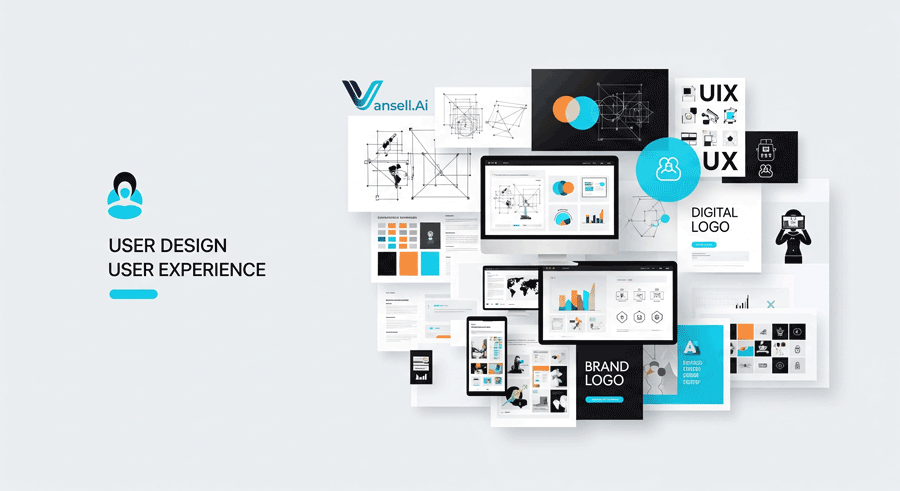What is Web Development? A Complete Beginner’s Guide
Learn what web development is, how it differs from web design, and the key skills you need to build modern, functional websites from scratch.

- hirbodchoobak@gmail.com
- ⏱ 8 min read
Introduction
In today’s digitally connected world, having a strong online presence is essential for businesses and individuals alike. Behind every website you visit lies web development — the technical process that turns designs and ideas into fully functioning websites and applications. But what exactly is web development, and how does it differ from web design? This article provides a detailed overview of web development, its core components, and the skills needed to excel in this field. Whether you’re a website owner, a developer, or a digital professional, understanding web development is key to leveraging the full potential of the internet.
What is Web Development?
Web development refers to the process of creating websites and web applications that run on the internet. It involves writing code that determines how a website functions, behaves, and interacts with users. Unlike web design, which focuses on visual elements and user experience, web development focuses on the building blocks that make a website operate smoothly.
The process includes everything from creating simple static pages to complex web-based applications, e-commerce platforms, social media networks, and more. Web development is generally divided into three main categories:
-
Front-End Development: What users see and interact with directly (the “client side”).
-
Back-End Development: The server, database, and application logic behind the scenes.
-
Full-Stack Development: Professionals who manage both front-end and back-end tasks.
How Web Development Differs from Web Design
Many people confuse web design with web development, but the two disciplines serve different purposes:
| Aspect | Web Design | Web Development |
|---|---|---|
| Focus | Visual layout, aesthetics, UX/UI | Functionality, coding, server logic |
| Tools | Photoshop, Figma, Sketch | HTML, CSS, JavaScript, Python, PHP |
| Goal | Create user-friendly interfaces | Build and maintain website functionality |
| Responsibility | Design mockups, wireframes | Write code, databases, APIs |
| Skillset | Creativity, graphic design, UX knowledge | Programming, problem-solving, databases |
While web designers create the look and feel of a site, web developers bring those designs to life by coding and building the actual site infrastructure.
Front-End Development Explained: Skills, Technologies, and Best Practices
Front-end development is all about the parts of a website that users interact with directly. It involves using languages like:
-
HTML (HyperText Markup Language): The structure of the web page.
-
CSS (Cascading Style Sheets): Controls the presentation and style.
-
JavaScript: Adds interactivity and dynamic content.
Core Skills and Tools:
-
Responsive design for mobile-friendly layouts.
-
Frameworks like React, Angular, or Vue.js to build complex user interfaces.
-
Version control with Git.
-
Cross-browser compatibility testing.
-
Performance optimization.
Best Practices:
-
Write clean, semantic code.
-
Optimize assets to reduce load times.
-
Ensure accessibility for all users.
-
Implement consistent navigation and UI components.
Back-End Development: Programming Languages, Databases, and Core Concepts
Back-end development powers the behind-the-scenes logic that makes websites functional. This includes server management, databases, and APIs.
Key Technologies:
-
Programming languages such as Python, Ruby, PHP, Java, and Node.js.
-
Databases like MySQL, PostgreSQL, MongoDB, or Redis.
-
Server management tools and cloud platforms (AWS, Azure).
Core Concepts:
-
Handling data storage and retrieval.
-
User authentication and security.
-
Server-side application logic.
-
RESTful APIs for communication between client and server.
Back-end developers ensure that everything works reliably, securely, and efficiently.
Full-Stack Development: Everything You Need to Know About Being a Complete Developer
A full-stack developer has expertise in both front-end and back-end development, making them versatile professionals who can build an entire web application from scratch.
Advantages:
-
Greater flexibility and problem-solving ability.
-
Ability to work across the entire development pipeline.
-
Valuable for startups and smaller teams.
Skills Needed:
-
Mastery of front-end technologies (HTML, CSS, JavaScript).
-
Proficiency in back-end languages and databases.
-
Understanding of server, networking, and hosting environments.
-
Familiarity with DevOps and deployment tools.
What is WordPress and Why It’s the World’s Most Popular CMS
WordPress is a content management system (CMS) that simplifies website creation and management. It powers over 40% of all websites worldwide, from blogs to e-commerce stores.
Why WordPress is popular:
-
Open-source and free.
-
User-friendly interface for non-technical users.
-
Thousands of themes and plugins to extend functionality.
-
Strong community support.
-
SEO-friendly features.
The Benefits of Building Your Website with WordPress
-
Quick setup and easy maintenance.
-
Flexible design options.
-
Built-in blogging platform.
-
Mobile responsive themes.
-
Cost-effective for businesses of all sizes.
-
Integration with third-party services.
How to Build a WordPress Website from Scratch: Step-by-Step Guide
-
Choose a domain and hosting provider.
-
Install WordPress.
-
Select and customize a theme.
-
Install essential plugins (SEO, security, caching).
-
Create pages and posts.
-
Configure settings (permalinks, reading).
-
Test on different devices.
-
Launch and promote your site.
The Best WordPress Plugins in 2025 to Boost Your Website’s Performance
-
Yoast SEO: For optimizing search engine visibility.
-
WP Rocket: Caching and speed optimization.
-
WooCommerce: E-commerce functionality.
-
Akismet: Spam protection.
-
Elementor: Drag-and-drop page builder.
-
UpdraftPlus: Backup and restore.
WordPress Speed Optimization: Improve Performance and Reduce Loading Time
-
Use caching plugins.
-
Optimize images before upload.
-
Minimize CSS and JavaScript files.
-
Use a Content Delivery Network (CDN).
-
Choose reliable hosting.
Progressive Web Apps (PWA): What They Are and Why They’re the Future of the Web
PWAs combine the best of websites and mobile apps by providing fast, reliable, and engaging experiences.
Benefits:
-
Offline access.
-
Push notifications.
-
Home screen installation without app store.
-
Improved performance.
Conclusion
Web development is a vast and dynamic field that combines creativity, logic, and technology. Whether you’re building a simple site or a complex web application, understanding front-end, back-end, and full-stack development is essential. WordPress continues to democratize web creation, while new trends like PWAs shape the future.
Investing time and resources into mastering web development tools and best practices will empower you to build websites that not only look great but perform excellently in today’s competitive digital landscape.https://vansell.ai/web-development

